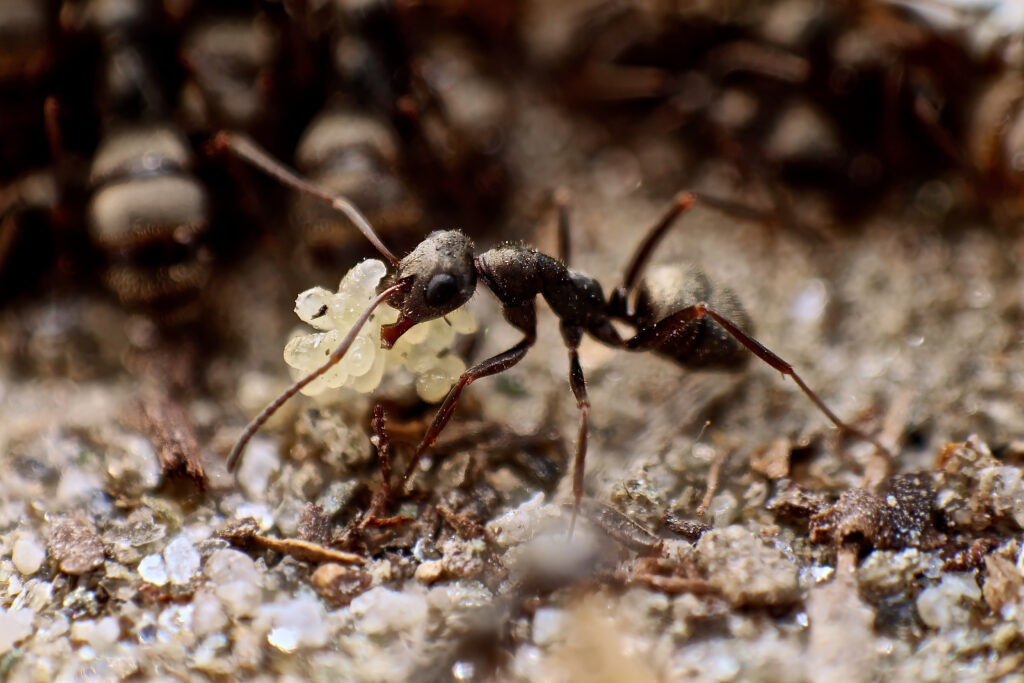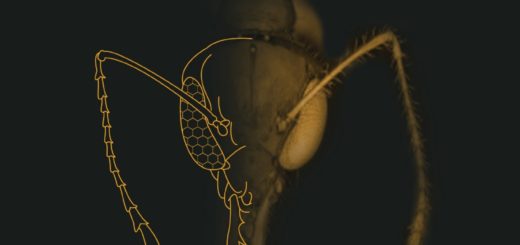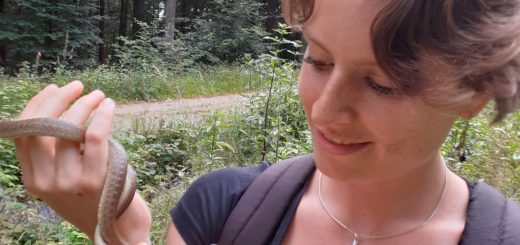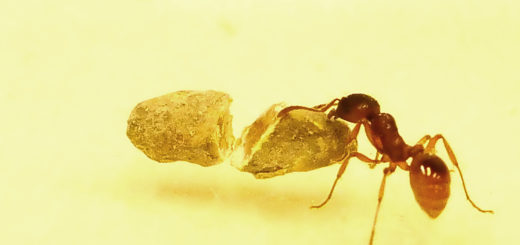Supergenes matter for ant social structure

Michel Chapuisat reviews concepts and findings on supergenes in the recent article “Supergenes as drivers of ant evolution” published in Myrmecological News. Colony social structure varies greatly within several ant species, with some colonies having a single queen and some multiple queens. This intraspecific variation was previously attributed to environmental and social factors, but recent genetic studies show that it is commonly caused by “supergenes” – large groups of linked genes that control complex adaptive traits. In this interview, Michel Chapuisat highlights the main points of this recent publication.
An Interview compiled by Beatriz Portinha and edited by Patrick Krapf and Alice Laciny

MNB: Could you tell us a bit about yourself?
MC: I am an evolutionary biologist and professor at the University of Lausanne. Besides research and teaching, I like backcountry skiing, hiking, and birdwatching.
MNB: Could you briefly outline the research you published in Myrmecol. News in layman’s terms?
MC: This is a review about the role played by supergenes in the social evolution of ants. Supergenes are clusters of linked genes that are inherited together, without undergoing recombination. Strikingly, in many socially polymorphic ant species, supergenes control whether the colony is headed by one queen (monogyny) or by multiple queens (polygyny). This changed our view on social polymorphism. The questions shift from “what are the advantages of polygyny?” to “how is this genetic polymorphism maintained?”
MNB: What is the take-home message of your work?
MC: Supergenes are widespread across the tree of life. They control complex phenotypes, such as colony social structure in several independent ant lineages. If multiple linked genes control co-adapted traits, the absence of recombination may prevent maladaptive combinations of alleles, and the evolution of supergene may be favoured by natural selection. However, supergenes have their own life. In particular, they tend to accumulate selfish genetic elements and deleterious mutations, because they don’t recombine. Therefore, supergenes are prone to cause selfish gene drive and other detrimental effects. Strikingly, the two best-studied social supergenes in ants show adaptive, selfish, and detrimental effects. I argue that explaining the long-term maintenance of social supergenes is a challenge, and that the underlying genetic system plays a direct role in the evolutionary dynamics of ant social polymorphism.
MNB: What was your motivation for this study?
MC: I wanted to convince behavioural ecologists or hardcore myrmecologists that, from time to time, genetics can be of interest. More seriously, I felt that the recent discovery of “social supergenes”, which show similarities and differences across independent ant lineages, have broad implications for ant social evolution.
MNB: What was the biggest obstacle you had to overcome in this project?
MC: Getting started, due to the usual press of business. Luckily, the Editors have been patient with me. Then I really enjoyed writing this piece. I particularly liked the freedom and space to ramble a bit and develop some personal views on the history of the field. The only other significant challenge was to structure the various bits of information into what I hope is a coherent story. Great thanks to “Reviewer 2”, Waring “Buck” Trible, for his advice on the structure of the review.
MNB: Do you have any tips for others who are interested in doing related research?
MC: Go for it! There is still so much to discover about supergenes. How they arose, how they function, and how they are maintained through millions of years of evolution. Natural history matters to find interesting “phenotypes” that are amenable to study. Sequencing is very powerful, but it’s a tool and a starting point. Getting the whole story will require broader approaches. To answer deep, ultimate evolutionary questions, researchers will have to combine multiple data sources and techniques, e.g., from genomics, transcriptomics, phylogenetics, physiology, behaviour, ecology, bioinformatics, and/or evolutionary modelling. That’s a lot. Clearly, teamwork will be needed.
MNB: Where do you see the future for this particular field of ant research?
MC: There will be more discoveries and characterisations of supergenes. Controlling not only colony social structure (queen number), but also colony sex ratio (producing males or females), dispersal morphs, socially parasitic lineages, maybe some specialized castes, behavioural syndromes, and ecotypes. Comparative genomics will provide key information on supergene evolution. Functional validation of candidate genes will remain challenging for the next couple of years, at least for large supergenes controlling complex social phenotypes, such as colony queen number. But luckily, lots of interesting questions on supergene origin, evolution and maintenance can be tackled without characterizing the exact molecular cascades leading from genes to phenotypes.






Recent Comments